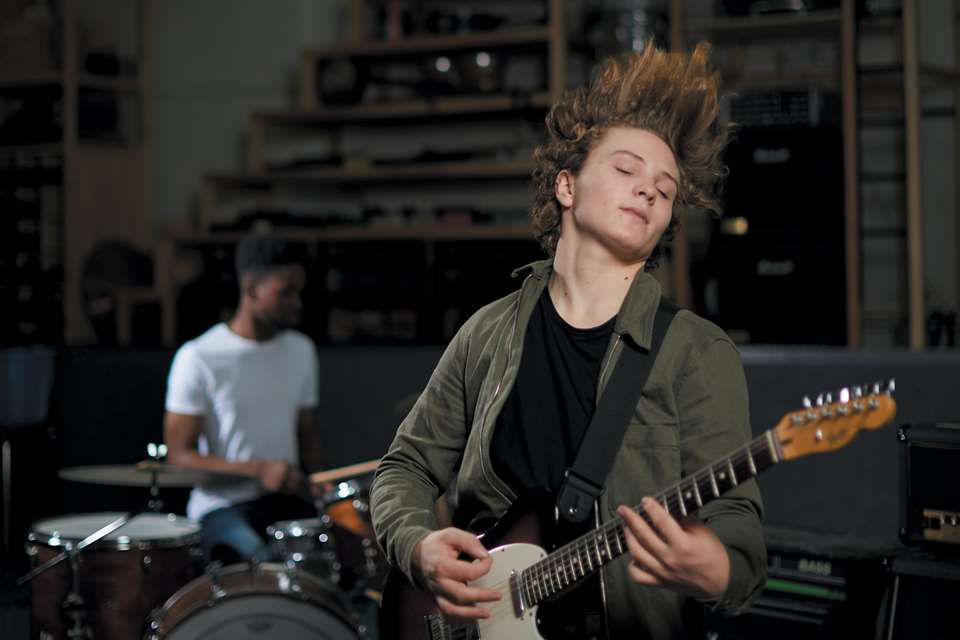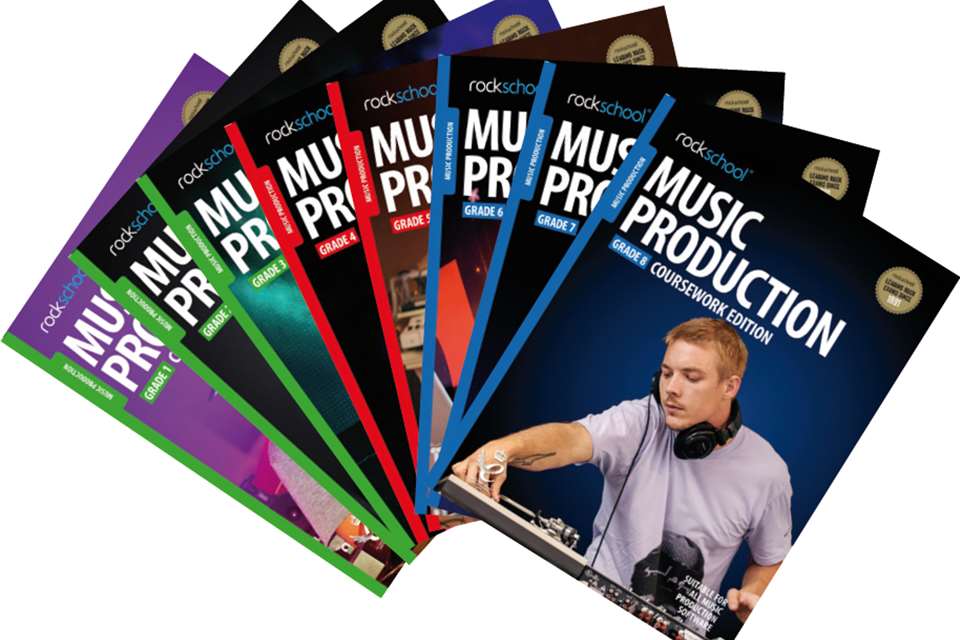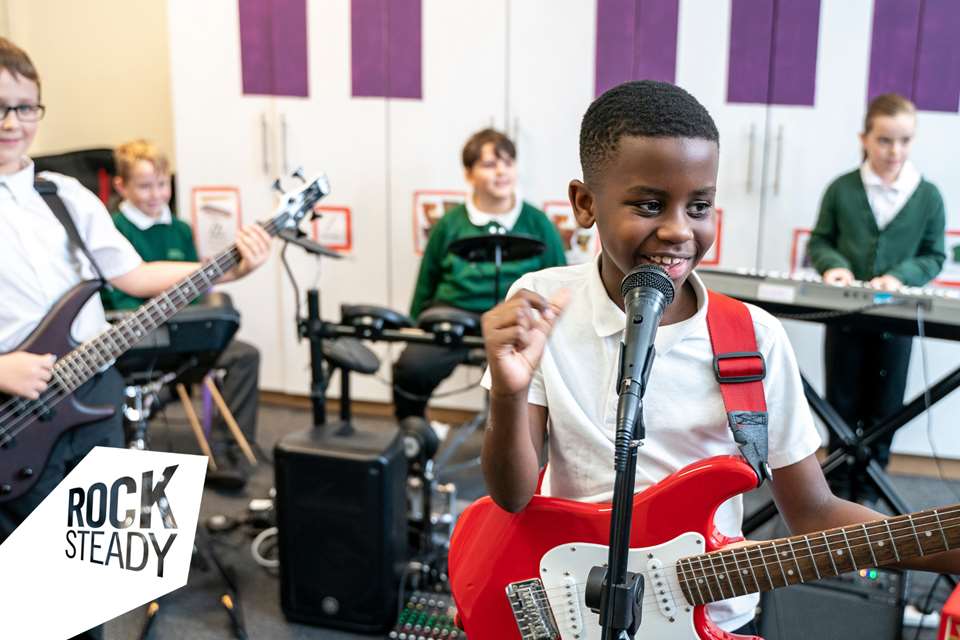Building KS3 rock and pop bands
Rick Kershaw
Friday, March 1, 2024
Want to create a rock and pop ensemble for your KS3 students? Rick Kershaw, training and quality manager for Lancashire Music Service, shares his tips for success.

Adobe Stock / Bangkok Click Studio
Before getting into how you might build a rock and pop ensemble at school, I'd like to clarify that my intention is not to teach anyone to suck eggs. There are amazing teachers who do this brilliantly, and with a huge variety of different approaches. There's my first piece of advice: do what works in your setting. The approaches which follow have worked for me, and it's in that spirit that I share them now.
Getting started
Your first task is to generate some interest. This can be a massive challenge and therefore needs a compelling draw. If you're skilled in rock instruments, showcasing your expertise through live or recorded performances can captivate students; being perceived as an accomplished musician brings kudos. I recall one conversation with a pupil after a lesson in which I'd been demonstrating, in the hope of getting a few to turn up to a practice. ‘Sir, you're a bit of a show-off, aren't you?’ ‘Of course I am’, I replied. ‘I'm a musician, that's what it's all about!’
While tongue-in-cheek, the message is clear: students benefit from positive role models, and, as experts, we should inspire them. A promise of biscuits also helps!
Choosing repertoire
This is hugely important and can make or break your sessions. Choose wrong and attendance could dwindle; choose right and you could quickly become overrun with kids (which would be a wonderful problem to have).
Jumping straight in with Dream Theater's ‘Ytse Jam’ would obviously be a bit of a mistake. Keep it nice and simple, give them a chance to succeed and enjoy the activity. You may also be surprised at how much pupils engage with songs that are 40-, 50- or even 60-years-old. Think about how enthusiastically your Year 9 boys will sing ‘Sweet Caroline’ (especially football fans).
In such songs, having simple root notes played by the rhythm guitar or bass is easy. There is a high chance of success with this, and it will sound pretty good with a solid drum-pattern (particularly with some well-timed playing or fills from yourself). There is then ample scope to develop the complexity of the arrangement by scaffolding the parts.
Another song I'd recommend is ‘Sharp Dressed Man’ by ZZ Top. Pupils can play this with just four notes and it can be developed easily through repeats. (It also provides an excuse to wear a silly fake beard!)
Notation: with or without?
Should you insist on your rock band reading notation? Should you have anything written down at all? Again, you should do what works best in your school, in terms of what students know, but particularly for the players in question. There's no point in sticking a sheet of notated bass lines in front of a pupil who will be intimidated by this and never show up again. On the other hand, if the pupil will engage with the process and enjoy the challenge, then go for it!
I found that a combination of learning by ear and modelling, with the odd chord-sequence jotted down, works best. Let's face it, this is the way that many accomplished professionals learn their craft. If it works, that's all that counts.
The magic box for guitars
Linked to repertoire choice is something I like to call ‘the magic box’. This relates to frets on a guitar or bass that are very close together and therefore easy to play without too much movement.
For example, ‘Sharp Dressed Man’ is in C, and needs the notes C, B-flat, F and G – see Figure 1. All four of these notes can be played at the third and first frets on the lower E string and A string. This means that movement across the fretboard is minimised; using two fingers, you barely need to move your hand at all.
 Figure 1. ‘Sharp Dressed Man’ by ZZ Top (in C major), requiring notes C, B-flat, F and G
Figure 1. ‘Sharp Dressed Man’ by ZZ Top (in C major), requiring notes C, B-flat, F and G
One of the go-to songs that can be seen up and down the country in school rock bands is ‘Seven Nation Army’ by White Stripes. While it is extremely repetitive and therefore seemingly easy to play, there is quite a lot of movement involved. This leads to a high mistake-count, which can be quite disheartening when pupils struggle to play something perceived as easy. Using songs that fit within the magic box alleviates this issue and keeps mistake-counts to a manageable level.
This approach can be applied to a number of songs, depending on where you fix your anchor point of the tonic note. Most straightforward songs combine a limited number of notes from the scale, and the magic box, in various guises, can usually cover these positions. All you need is to work out where to place the box on the fretboard, for the purpose of finding the required notes. See Figures 2 and 3 for examples.
 Figure 2. ‘Sit Down’ by James (in E major): E, A and B, all played on lower E string and A string, open or second fret
Figure 2. ‘Sit Down’ by James (in E major): E, A and B, all played on lower E string and A string, open or second fret
 Figure 3. ‘Highway to Hell’ by AC/DC (in A major, although the recording sounds more like A-flat due to a mastering issue): A, G, D and E, all played on the D string and A string, fifth and seventh fret (with a little creativity through inversions or adding the F-sharp)
Figure 3. ‘Highway to Hell’ by AC/DC (in A major, although the recording sounds more like A-flat due to a mastering issue): A, G, D and E, all played on the D string and A string, fifth and seventh fret (with a little creativity through inversions or adding the F-sharp)
The box can be extended over three strings or three frets (e.g. when playing ‘Smells Like Teen Spirit’), or with an extra note thrown in.
The drums
Similarly, the key here is to keep things simple. Most songs are in 4/4, so stick to a simple kick-snare-kick-snare pattern. Take the hi-hats out if you need to; you can always put them back in later. Again, there is an enormous amount of scope to develop this, adding in more complex patterns and fills, thinking in layers.
See Figure 4 for options for getting the drummer started. Learning these by ear is most effective.
 Figure 4. Simple drum patterns in 4/4
Figure 4. Simple drum patterns in 4/4
What ifs...
‘What if I can't play the instruments myself?’ Even though time is short, there's no harm in you taking a guitar home to have a go yourself. Think of it as CPD. You're likely to be an accomplished musician and can tell when things aren't right. Alternatively, can you make use of your peri teachers? Are there other members of staff, older pupils or even an enthusiastic parent willing to lend a hand?
‘What if there's a part missing in the band?’ Backing-tracks are your friend. Yes, these can sometimes sound like glorified karaoke and make you shudder, but, if used musically, they can really help. There are several ways to source them (with or without certain instruments muted) and you don't need a lot of technical knowledge.
‘What if I have very able students who might get bored?’ Use them to help you teach, give them solos to play, or let them play the more complex parts to an arrangement. This is no different to how you would run a school orchestra or concert band.
‘What if I haven't got enough instruments?’ Have a chat with your local music hub, which could have loads of instruments sitting about that need playing. Do an instrument ‘amnesty’ at school, where families with a spare guitar at home (doing nothing) may be willing to donate. Places such as Facebook Marketplace, Shpock or even local charity shops tend to have a plethora of old instruments in need of a good home. If you're serious about developing this as a mainstay of your department, speak to your head and see if you can get some funding.
‘What if I don't have resources?’ Here are just a few to get you going (from the many out there):
- YouTube
- Musical Futures ‘Just Play’ series
- Music Will (formerly Little Kids Rock)
‘What if it takes off?’ Having a rock band can be a great way of boosting your extra-curricular offer and the number of pupils engaged. It also develops your relationship with pupils through what is generally perceived of as great fun. Bands can liven up your school concerts, play at other school events, and engage staff who previously hadn't paid much attention to what you're doing. This can be an easy starting point if you're building your department from scratch – and could be one of a great line-up of musical activities in your school. Good luck!





